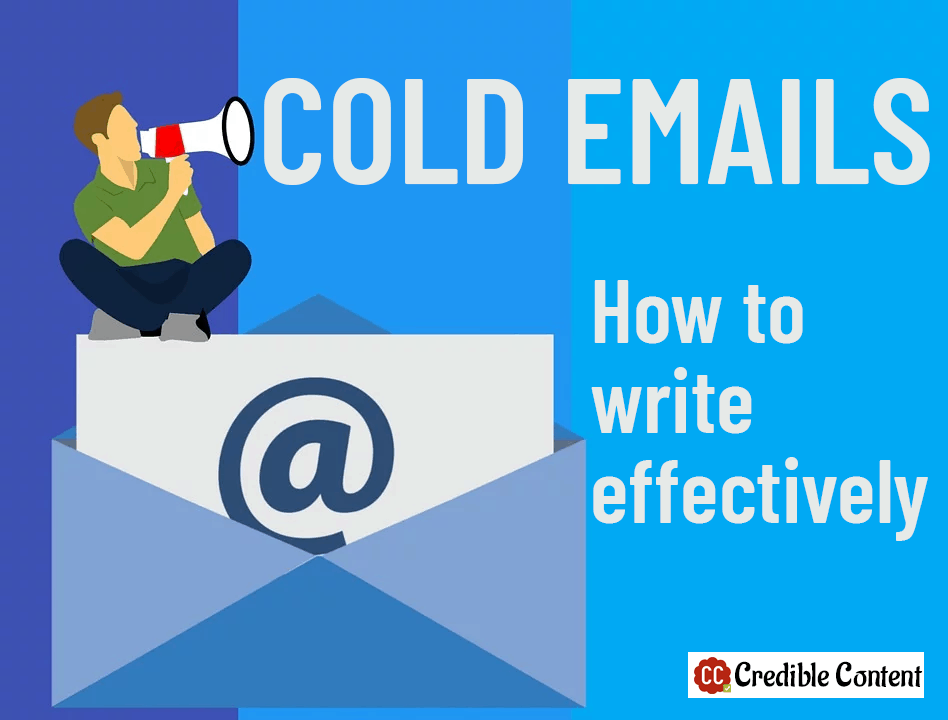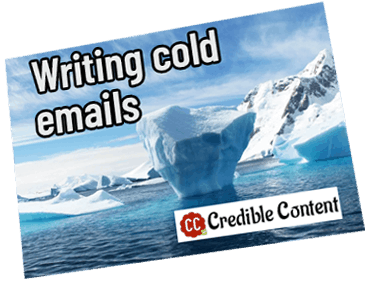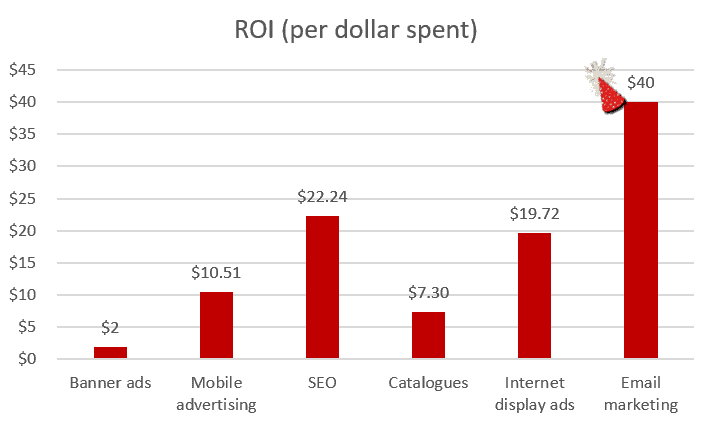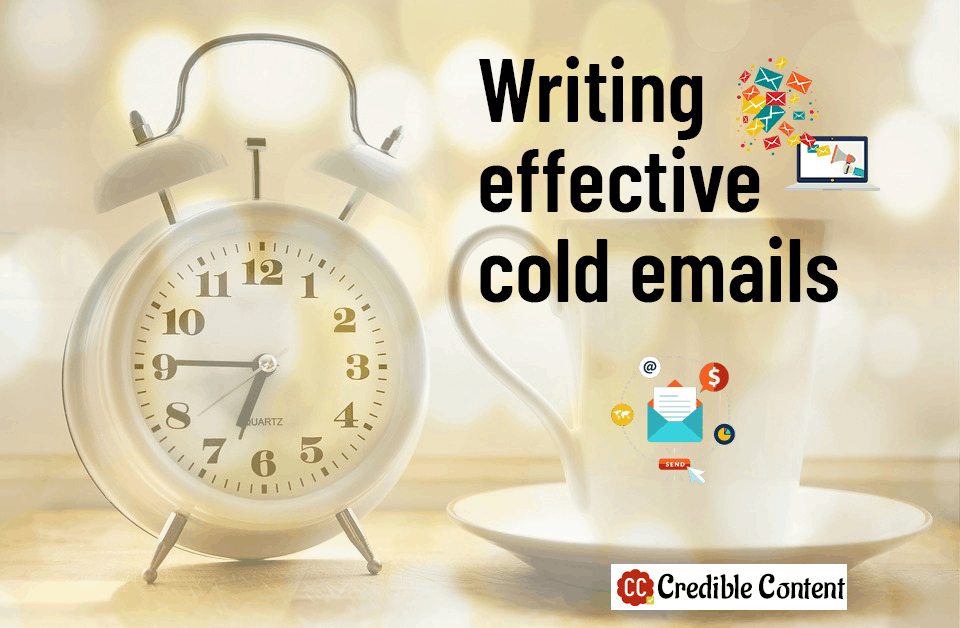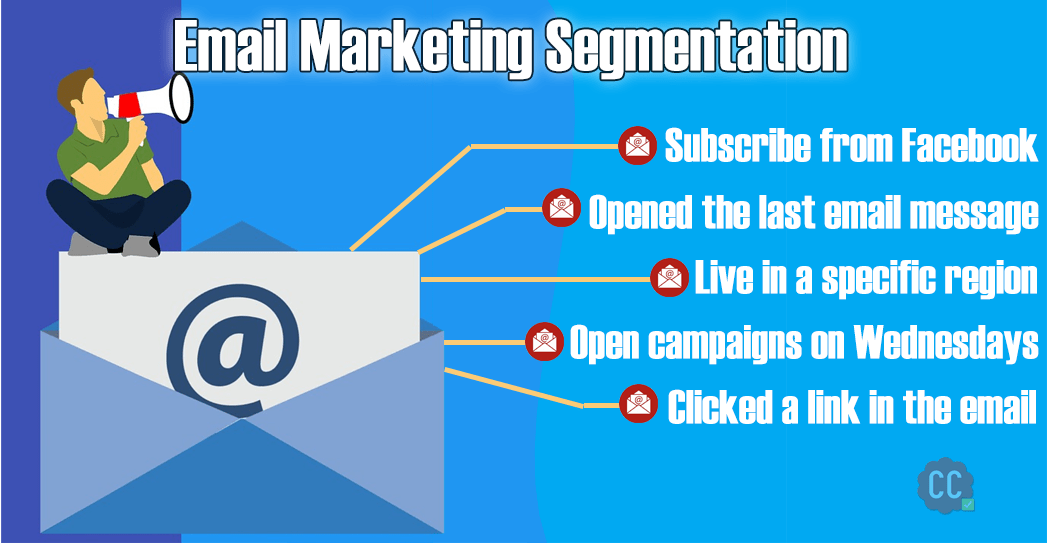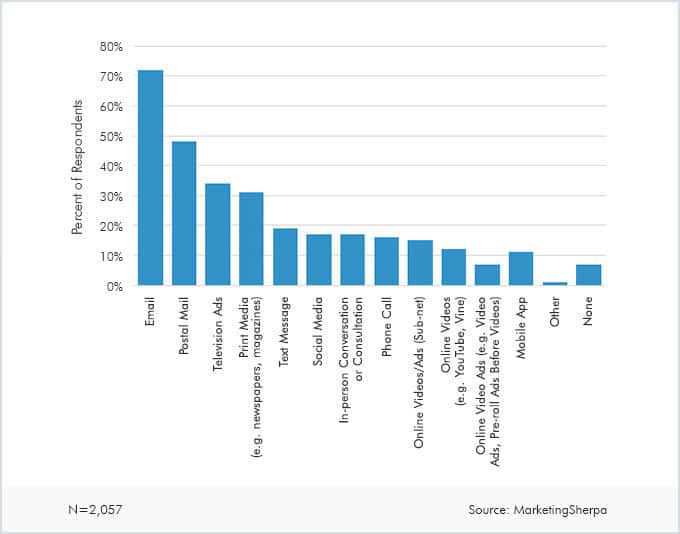Just like people make cold phone calls, they also send cold emails. A cold email is an unsolicited business proposal that you may send to an individual.
You might be receiving lots of such emails as spam, but there is also a proper way of sending them.
Have I ever sent cold emails? Never.
But I write emails for clients. There is a client in Itarsi, India, for whom I have been writing business correspondence since June 2016. Then there is another client from Egypt for whom I have been rewriting emails since the beginning of 2019. There is a client in the Philippines whom I have been helping write general communication emails since January 2018.
Then of course, I regularly provide copywriting services for email marketing campaigns.
The idea of writing on the topic of writing cold emails came to me in the morning today when I was proofreading an “email template” sent to me by one of my regular clients. I normally don’t charge for proofreading such small messages but it doesn’t mean I don’t take active interest in them.
I not only proofread the content, I also made suggestions and made changes. The cold email had been written in such a manner that if I receive it, I will immediately consign it to the Trash folder. I will also mark it as spam.
Some insights on email marketing
Email marketing is a serious business and in fact, one of the most effective forms of digital marketing. Email marketing is so effective that for every dollar that you spend on it, you get an ROI of $40. It is highest among all the forms of digital marketing.
Here is a graph that I generated recently
Many naysayers have been saying for more than a decade that email marketing is dying.
Totally the opposite has been happening.
According to Statista, we are already sending and receiving 293.6 billion emails everyday (2019). By 2022, we will be sending and receiving 333.2 billion emails. By 2017, according to Radicati, there were 4.9 billion email accounts worldwide
Even if 90% of them are spam, the remaining 10% are a lot.
A Marketing Sherpa report has revealed that 72% consumers prefer to receive promotional messages through email, especially from brands they trust.
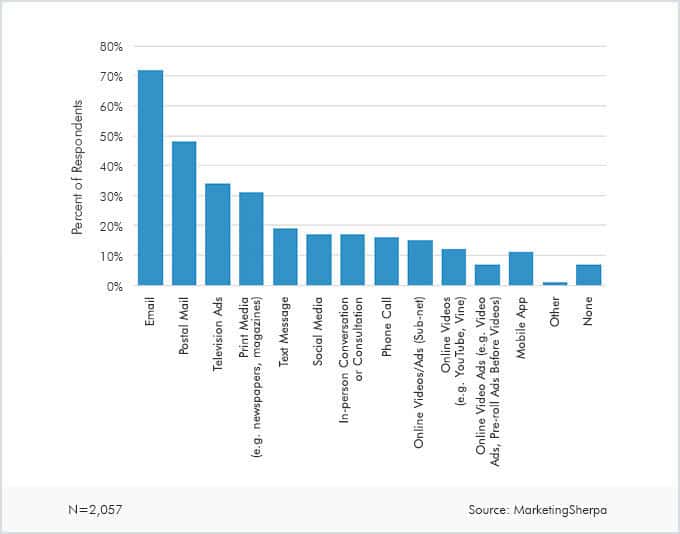 If somehow you cannot relate to these stats, think of how many times you have to use email. For every online purchase, you get an email notification. Whenever you open up an account with an online service, these days even with an off-line service, you enter your email.
If somehow you cannot relate to these stats, think of how many times you have to use email. For every online purchase, you get an email notification. Whenever you open up an account with an online service, these days even with an off-line service, you enter your email.
Lost login details? They are sent to your email account. Your domain expiring? You get a notification email. Carried out a bank transaction? The details are sent via email. Your kids homework is sent via email. Someone sends you a message on LinkedIn? You get notified on email. Even terrorists send threats via email.
All your official correspondence happens via email.
The point is, you are checking your email multiple times in a day. So, email is still happening.
Wary about spam?
The various spam restrictions and antispam features in most of the email clients is bad for spammers but good for legitimate email marketers.
Spammers are lazy. They cannot work hard enough to build their own mailing lists of people who would actually like to hear from them. They also don’t know how to write better messages. Whether they send out 10,000 messages in one go, or 1 million messages, the response rate is hardly a little over 0%.
Hence, the field is wide open for people who actually want to use the power of email to not just grow their businesses, but also provide better products and services to their customers and clients.
Now, coming back to…
Writing effective cold emails
What is a cold email?
It is a business proposal email that you send to a person who is not expecting to hear from you. He or she doesn’t know about your existence. In many cases he or she isn’t even aware of the fact that he or she may need your service.
A good example is the InMail function in LinkedIn. You come across a profile that can be good business prospect. You do some study, carefully go through the profile and decide to introduce yourself to that person. You will be sending a cold message because the person is not expecting to receive a message from you.
Whether you like sending cold emails or not is beside the point. I’m not comfortable sending cold emails but it doesn’t mean if a client asks me to write one, I’m going to refuse. I’m going to write it with full enthusiasm as if I myself am sending it.
Here are a few things to keep in mind when writing a cold email
Have a clear understanding of the need of your segment
What are the problems being faced by your recipient for which you are sending a proposal to solve? This will help the recipient to immediately relate to what you’re trying to convey and then possibly, respond.
Suppose you are a marble tiles manufacturer. You want to send cold emails to construction contractors in your city to let them know that you supply good marble tiles that they can use with their clients.
Now, you must know that these construction contractors are either looking for better options, or they are fed up with their current marble tile suppliers.
They may also be looking for variety to create better designs.
Hence, you must know that
- The recipients are actually construction contractors.
- Now and then they use marble tiles.
- They may be looking for better marble tiles or better deals.
Knowing your recipient is crucial to writing an effective cold email.
Start the greeting with an actual name
The email that I was proofreading in the morning started with “Hello Sir!”. Who starts an email with “Hello Sir!” these days?
What if there is a lady at the receiving end of your cold email?
According to an article published in the Sophisticated Marketer Issue 7 (by LinkedIn) 81% consumers say that they are less interested in dealing with businesses who don’t make an effort to personalize their communications.
This is why, especially in these sensitive times, it is very important that you know the name of the person to whom you are sending your cold email.
Use a compelling subject line
You want your recipient to open your email, right?
100% of your recipients will open your message if they are drawn to it by a compelling subject line.
Subject lines are so important that 47% marketers use different subject lines to find out which is the most effective subject line for their email marketing campaign (source).
What makes your subject line compelling? You should invoke a sense of
- Urgency
- Curiosity
- Familiarity (through personalization)
- Relevance and timeliness
- Profitability
- Coolness.
Keep your cold email subject line short, sweet and to the point. Convey the central message of your email as clearly as possible. Make your effort irresistible.
Talk about the problem in the beginning itself
Your copy must immediately hook the person.
If I send you a cold email to promote my service, as a content writer who can help you improve the effectiveness of your email marketing campaigns, I should identify your need to run effective email marketing campaigns with a higher conversion rate in the first or the second sentence itself.
In fact, I should use a headline like “Quadruple your conversion rate”, or something like that.
I must know that you are having problems with your email marketing and you want to improve it and you are already looking for ways to improve it.
Even if you are not actively looking for ways to improve your email marketing, I must know that given a chance, you will be ready to spend some money on improving your email marketing conversion rate.
Then, and the rest of the copy, I will explain to you how my copywriting services are going to improve your email marketing conversion rate.
The biggest disadvantage faced by a cold email is the lack of familiarity. You can mitigate this disadvantage to a great extent by doing some research on your segment and then writing a message that is as relatable as possible.

